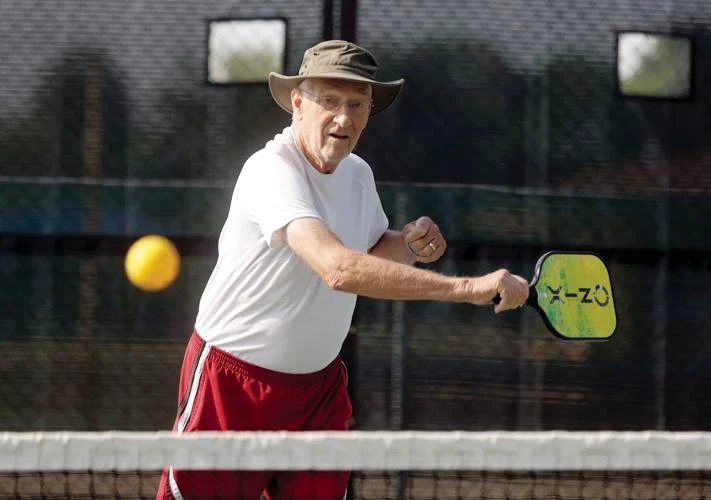Pickleball, a fast-paced and engaging sport, has gained immense popularity in recent years. Central to the game is the concept of the non-volley zone, often referred to as the kitchen. In this guide, we'll delve into the intricacies of pickleball kitchen rules, helping players understand how to navigate this critical area of the court effectively.
The non-volley zone, or kitchen, plays a crucial role in dictating the flow and strategy of pickleball matches. Positioned adjacent to the net on both sides of the court, the kitchen serves as a zone where players must exercise caution and precision in their shot selection. Understanding the rules governing the kitchen is paramount for players aiming to maintain control of rallies and capitalize on scoring opportunities. Throughout this guide, we will explore the nuances of pickleball kitchen rules, empowering players to optimize their performance and elevate their gameplay.
- Understanding the Non-Volley Zone (Kitchen)
The non-volley zone, commonly known as the kitchen, is a designated area on the pickleball court that spans 7 feet from the net. This zone plays a crucial role in dictating player movement and shot selection during the game.
- Kitchen Boundary
- The kitchen boundary extends 7 feet from the net on both sides of the court, demarcating the area where players are restricted from volleying the ball.
- Players must exercise caution when maneuvering within the kitchen to avoid committing faults during play.
- Kitchen Rules and Exceptions
While the kitchen imposes certain limitations on player actions, there are exceptions to the rules that allow for strategic gameplay and shot execution.
- Kitchen Rules
- Volley Restrictions: Players are prohibited from volleying the ball while standing within the boundaries of the kitchen. Volleying refers to hitting the ball in mid-air before it bounces on the court surface.
- Faults and Penalties: Violating kitchen rules may result in faults, which award points to the opposing team. Players need to adhere to these regulations to avoid penalties.
- Exceptions
- Shot Recovery: Players may enter the kitchen after hitting a shot outside its boundaries and must promptly exit after completing their stroke.
- Bounced Balls: If the ball bounces within the kitchen before being struck, players are allowed to enter the zone to return it without penalty.
III. Strategic Considerations
Understanding how to navigate the non-volley zone strategically can significantly impact gameplay and contribute to overall success on the court.
- Shot Placement
- Dinking Strategy: Dinking, or softly placing the ball over the net, is a common tactic used within the kitchen to control the pace of the game and force opponents into difficult positions.
- Lobbing Opportunities: Lobbing the ball over opponents' heads can create scoring opportunities and disrupt their positioning near the net.
- Footwork and Positioning
- Quick Reflexes: Developing agility and quick reflexes near the kitchen can help players react to fast-paced exchanges and capitalize on scoring chances.
- Strategic Retreats: Knowing when to retreat from the kitchen to reset the rally and regain control of the point is essential for strategic gameplay.
- Conclusion
The pickleball kitchen rules add depth and nuance to the sport, challenging players to exhibit precision and finesse in their shot selection and movement. By understanding the regulations governing the non-volley zone and employing strategic approaches, players can elevate their performance and enjoy greater success on the court.
Mastering the intricacies of the kitchen not only enhances gameplay but also fosters a deeper appreciation for the sport's strategic elements. As players become more adept at maneuvering within the non-volley zone, they unlock new dimensions of strategy and skill, paving the way for exhilarating matches and rewarding experiences on the pickleball court.
FAQs About Pickleball Kitchen Rules
- Can players step into the kitchen to hit a volley if their momentum carries them into the zone?
No, players must avoid entering the kitchen to hit volleys, even if their momentum carries them into the zone. Doing so constitutes a fault.
- Are there specific penalties for violating kitchen rules?
Violating kitchen rules typically results in the opposing team being awarded a point. It's essential to adhere to these regulations to maintain a fair and competitive game.
- Can players return a ball that bounces within the kitchen without penalty?
Yes, players are allowed to enter the kitchen to return a ball that has bounced within its boundaries. This rule ensures fair play and allows for continuous rallies.
- Are there any instances where volleying within the kitchen is permitted?
No, volleying within the kitchen is strictly prohibited under standard pickleball rules. Players must exercise caution to avoid committing faults during play.
- How can players improve their proficiency in navigating the non-volley zone?
Practicing footwork drills and honing dinking and lobbying techniques can help players develop the skills needed to maneuver effectively within the kitchen and execute strategic shots.


No comments yet